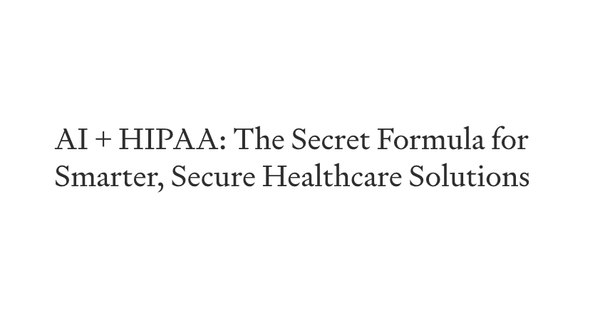How Patients Often Confuse Medical Errors, Complications, and Malpractice!
Discover how patients often confuse medical errors, complications, and malpractice, and learn why understanding these distinctions is crucial for fostering trust, patient safety, and value-based healthcare services
Table of Content
As a doctor, I’ve seen it all. Patients upset about unexpected outcomes, worried family members, and occasionally, outright blame. What strikes me most is how often patients confuse medical errors, complications, and malpractice. This confusion is more than semantics; it creates a barrier to trust and disrupts the delicate balance of the healthcare system.
Recently, while reading about Egypt’s new medical malpractice law, it became clear to me that many of these misunderstandings stem from a lack of clarity and education. So, let’s break this down in plain language—what these terms mean, why they’re often confused, and how this affects everyone involved.
Medical Errors, Complications, and Malpractice—What’s the Difference?
Understanding these terms is essential, not just for patients but also for fostering better communication and expectations. Here’s how I explain it to my patients:
- Medical Complications Think of complications as risks that come with the territory. Even with the best doctor, complications like infections after surgery or medication side effects can happen. These are not necessarily anyone’s fault but rather part of the inherent risks of medical treatment. They’re frustrating but often unavoidable.
- Medical Errors Errors happen when something goes wrong—a misdiagnosis, a misplaced chart, or the wrong medication dose. These don’t always mean negligence or incompetence. Often, they’re symptoms of systemic issues like poor communication or overburdened staff. Fixing errors requires improving the entire healthcare system, not just pointing fingers.
- Medical Malpractice Malpractice is more serious. It’s when a doctor’s care falls below the accepted standard and directly causes harm. This is not just a mistake—it’s negligence. Proving malpractice requires showing that the harm was preventable if the doctor had acted differently. It’s a legal issue and rightly so.
Why the Confusion?
So, why do patients often confuse these terms? In my experience, there are three main reasons:
- Limited Medical Knowledge Medical terminology can be overwhelming. Words like “complication” and “error” sound similar, and without clear communication, they’re easily misunderstood. Resources like this guide on medical errors for patients can be incredibly helpful.
- Emotional Responses When something goes wrong, emotions run high. Fear, frustration, and grief often lead to misplaced blame. It’s human nature to want answers, and unfortunately, doctors are often the easiest target.
- Media and Legal Influence Media loves a good scandal. Malpractice cases are sensationalized, while the realities of medical complications and errors are rarely discussed. Add ambiguous legal frameworks like those in Egypt, and it’s no wonder confusion reigns.
The Fallout—What This Does to Healthcare
This confusion doesn’t just affect individual patients and doctors; it ripples through the entire healthcare system:
- Trust Takes a Hit When patients equate complications or errors with malpractice, the trust between doctors and patients erodes. Without trust, open communication—the cornerstone of effective care—becomes impossible.
- Defensive Medicine Fear of lawsuits pushes doctors to practice defensively. That means unnecessary tests, referrals, and sometimes avoiding complex cases altogether. It’s bad for patients and drives up costs.
- Burnout and Strain Constant blame and fear of litigation weigh heavily on doctors. Burnout is already a huge issue in healthcare, and this only makes it worse. Over time, it can lead to fewer experienced professionals in the field, reducing the quality of care.
Building a Healthier Relationship
This isn’t an unsolvable problem. Here are some ways we can create a more understanding and collaborative healthcare environment:
- Educate Patients Knowledge is power. Patients need resources that explain risks, errors, and malpractice clearly. Pre-treatment discussions about potential complications can help set realistic expectations.
- Clear Legal Definitions Governments must define these terms clearly to protect both patients and doctors. The new Egyptian law is a step in the right direction, but there’s room for improvement.
- Value-Based Healthcare Moving toward a system that prioritizes patient outcomes, safety, and satisfaction over sheer volume is critical. Value-based care focuses on quality over quantity, benefiting everyone involved.
- Empathy and Communication Doctors need to listen and explain more, and patients need to feel empowered to ask questions. A little empathy goes a long way on both sides.
- Invest in Safety From better training to improved hospital systems, investing in patient safety reduces errors and improves trust. It’s a win-win.
Final Thoughts
Medical errors, complications, and malpractice are not the same—far from it. Yet, the confusion surrounding them damages trust, increases costs, and creates unnecessary stress for everyone involved. By addressing this confusion, we can foster a healthcare system that’s not just safer but also more satisfying for patients and providers alike. For more on this topic, check out this guide for patients and my thoughts on Egypt’s new malpractice law. Let’s work together to build a system based on trust, understanding, and value.











